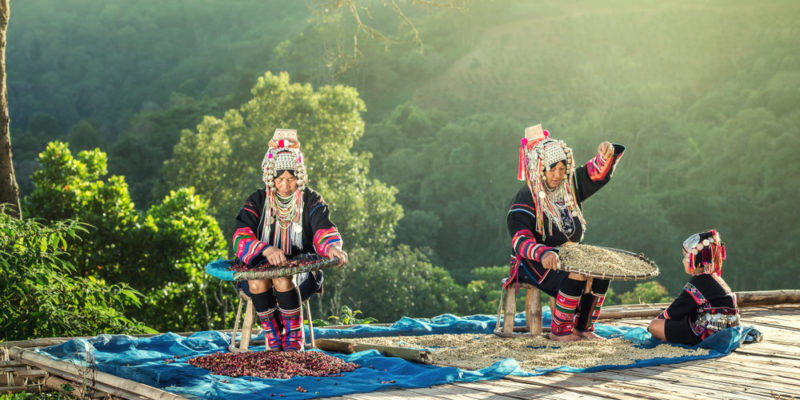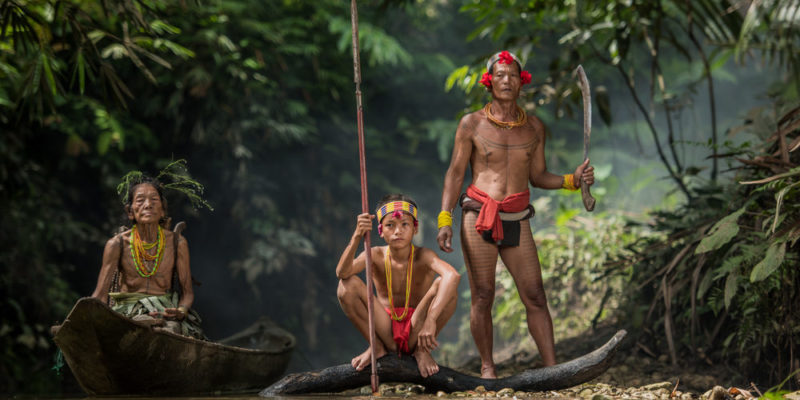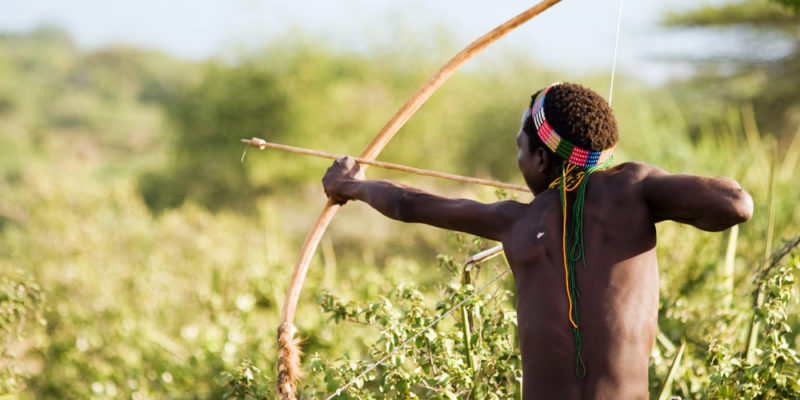We explain what indigenous people are and what their characteristics are. Also, how is your society, religion and relationship with the environment.
What Are indigenous People?
Indigenous people are native people of a place and belonging to an original people , that is, a people from which their family, culture and traditions also come. The name derives from the Latin, “inde” meaning right there and “genos” meaning born .
The word “indigenous” differs from “native” which represents a person who was born in a territory but does not maintain the traditions of their ancestors. In the case of the indigenous, it is important to note that their lineage has belonged to that region since times before the Spanish conquest.
Indigenous peoples have suffered numerous combats throughout history, with the aim of displacing them from their lands. Despite being a minority, they maintain their pre-Hispanic customs and a political-social organization different from that proposed by the modern state.
The United Nations (UN) estimates that there are 370 million indigenous people around the world , who inhabit 22% of the earth’s mass. Despite their differences, they share similar experiences and struggles.
Characteristics of the indigenous

The indigenous people are characterized by certain very demarcated physical features , such as mestizo skin, black eyes, dark straight hair, and a robust build. Their clothing varies according to the type of climate of the area they inhabit and they usually wear garments made with fabrics and animal skins .
They build their homes with adobe, wood , tree leaves or straw and, depending on the geography of the area they inhabit, they can use the caves to protect themselves from the intense temperatures .
Currently, there are some 7,000 indigenous languages around the world , which constitute complex knowledge systems and are a fundamental part of the identity of native peoples and the preservation of their culture.
Social organization of the indigenous

The social organization of the indigenous is hierarchical, headed by a cacique who directs the entire tribe and has lower-ranking advisers. The cacique is usually an older adult, considered a spiritual guide and leader .
Within each community different families made up of father, mother and children live together . The role of the father consists of going hunting to bring food to his family, an activity that he carries out together with other adult men.
Women are responsible for maintaining the home and making clothing for the family. The children are cared for, most of the time, by the elders of the tribe.
Indigenous religion

Indigenous populations have different customs or religious beliefs . However, they share two fundamental characteristics:
- They consider the existence of a “great creator” or a great spirit responsible for the creation of the Earth and that is present in all things and living beings . Most of the towns usually represent it with the sun.
- In addition to the main god, they worship multiple gods or inferior spirits to whom they worship and admire. Although they are called differently, they usually represent each god with a phenomenon of nature, such as the god of rain , sun and wind.
It is very common for indigenous peoples to accompany their religious rituals with traditional music and dance . For this, they use decorated wooden masks and musical instruments such as the drum (made with wood, bones and animal skins) and wind instruments such as flutes (made with reeds or hollow logs).
Relationship with the environment

The indigenous people maintain a harmonious relationship with the environment , on which their subsistence directly depends. Empirical research has shown that in areas where indigenous peoples have control of the land, biodiversity flourishes .
The indigenous people consider that the observation of nature and animals can lead them to great discoveries. So much so that their medicinal practices are based on the knowledge of healing plants .
Declaration on the rights of indigenous peoples
This UN declaration was made on September 13, 2007 and emphasizes the right of each indigenous people to live with dignity , under their own rules , maintaining their institutions and customs.
The word “indigenous” was adopted by Aboriginal leaders in the 1970s, following the rise of indigenous rights movements around the world. It turned out to be a way of generating union and identification of the communities , being recognized in the political arena.
The indigenous people of Mexico today
There are currently around 68 indigenous peoples in Mexico and the 20 most populous are:
- The Nahuas. With 2 million inhabitants distributed in the south of what is now Mexico City and in the Milpa Alta Delegation.
- The Mayans . With 1.5 million inhabitants distributed in the states of Yucatan, Quintana Roo, Campeche, Tabasco and Chiapas.
- The Zapotecs . With 460,000 inhabitants distributed in regions of the state of Oaxaca, such as: the Sierra Zapoteca, the Isthmus of Tehuantepec and the Valley of Oaxaca.
- The Mixtecs . With more than 700,000 inhabitants distributed in some areas of Guerrero, Puebla and Oaxaca.
- The Otomi. With more than 100,000 inhabitants distributed in the central zone of Mexico, in the states of Hidalgo, Querétaro, Guanajuato, Michoacán, Puebla, Veracruz and the State of Mexico.
- The Totonacs. With 411,000 inhabitants distributed in Veracruz and Puebla. To a lesser extent, they extend to other states of the Republic .
- The Tzotzils. With 400,000 inhabitants distributed in the state of Chiapas.
- The Tzeltals. With 380,000 inhabitants distributed in the state of Chiapas (they share many activities with the Tsotziles).
- The Mazahuas. With 320,000 inhabitants distributed in the northwest of the State of Mexico and in a small region in the west of the State of Michoacán.
- The Mazatecs. With 300,000 inhabitants distributed in regions such as La Cañada, the mountainous area and the Papaloapan-Tuxtepec valley (Oaxaca).
- The Huastecs . With 220,000 inhabitants distributed in some regions of Veracruz, Tamaulipas, San Luis Potosí, Querétaro and Hidalgo.
- the choles. With 220,000 inhabitants distributed in the northwest of Chiapas.
- The Purepechas. With 200,000 inhabitants distributed in 22 municipalities in the state of Michoacán.
- The Chinantecs . With 200,000 inhabitants distributed in 14 municipalities in the state of Oaxaca.
- the mixes. With almost 150,000 inhabitants distributed in the north of the state of Oaxaca.
- The Tlapanecos. With 140,000 inhabitants distributed on the coast and in 13 municipalities in the state of Guerrero.
- The Tarahumara. With almost 120,000 inhabitants distributed in the part of the Sierra Madre Occidental that crosses the states of Chihuahua, Durango and Sonora.
- The Mayos or Yoremes . With almost 90,000 inhabitants distributed in the north of Sinaloa and the south of Sonora.
- the zoques. With almost 86,000 inhabitants distributed in three areas of Chiapas: the slope of the Gulf, the Sierra and the Depression.
- The Chontals. With almost 80,000 inhabitants distributed in the state of Tabasco.
The above content published at Collaborative Research Group is for informational and educational purposes only and has been developed by referring to reliable sources and recommendations from technology experts. We do not have any contact with official entities nor do we intend to replace the information that they emit.














